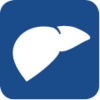Alkaline phosphatase


Alkaline phosphatase (ALP) pathological increases are largely associated with hepatobiliary and bone diseases.
Reference Ranges
| DGKCDeutsche Gesellschaft für Klinische Chemie | |||||
|---|---|---|---|---|---|
| 25°C | 30°C | 37°C | |||
| Children | |||||
| 1-12 years | [U/L] | < 480 | < 596 | < 727 | |
| [µkat/L] | < 8.00 | < 9.93 | < 12.1 | ||
| 13-17 years | female | [U/L] | < 296 | < 367 | < 448 |
| [µkat/L] | < 4.93 | < 6.12 | < 7.47 | ||
| male | [U/L] | < 617 | < 767 | < 935 | |
| [µkat/L] | < 10.3 | < 12.8 | < 15.6 | ||
| Adults | [U/L] | < 170 | < 211 | < 258 | |
| [µkat/L] | < 2.83 | < 3.52 | < 4.30 | ||
| IFCCInternational Federation of Clinical Chemistry and Laboratory Medicine |
|---|
| Adults | ||
|---|---|---|
| Women | 35 – 104 U/L | 0.58 – 1.74 µkat/L |
| Men | 40 – 129 U/L | 0.67 – 2.15 µkat/L |
| Children | Female [U/L] | Female [µkat/L] | Male [U/L] | Male [µkat/L] |
| 1 – 30 days | 48 – 406 | 0.8 – 6.77 | 75 – 316 | 1.25 – 5.27 |
| 1 month – 1 year | 124 – 341 | 2.07 – 5.68 | 82 – 383 | 1.37 – 6.38 |
| 1 – 3 years | 108 – 317 | 1.8 – 5.28 | 104 – 345 | 1.73 – 5.75 |
| 4 – 6 years | 96 – 297 | 1.6 – 4.95 | 93 – 309 | 1.55 – 5.15 |
| 7 – 9 years | 69 – 325 | 1.15 – 5.42 | 86 – 315 | 1.43 – 5.25 |
| 10 – 12 years | 51 – 332 | 0.85 – 5.53 | 42 – 362 | 0.7 – 6.03 |
| 13 – 15 years | 50 – 162 | 0.83 – 2.7 | 74 – 390 | 1.23 – 6.50 |
| 16 – 18 years | 47 – 119 | 0.78 – 1.98 | 52 – 171 | 0.87 – 2.85 |
Each laboratory should check if the reference ranges are transferable to its own patient population and determine own reference ranges if necessary. For diagnostic purposes, the results should always be assessed with the patient’s medical history, clinical examinations and other findings.
For information on clinical relevance, please refer to the package insert.

